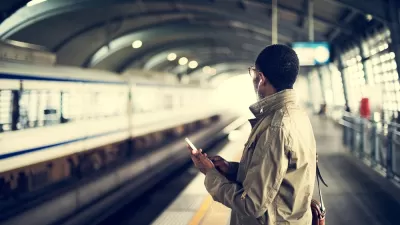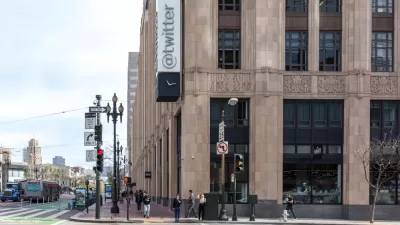Will the red-hot microblogging platform Twitter change the way we live in our cities, how we call for help in an emergency, or even help rally a group to topple the city's government? Or is it a frivolous technology that simply atomizes our thoughts and relationships into 140-character bits?
Will the red-hot microblogging platform Twitter change the way we live in our cities, how we call for help in an emergency, or even help rally a group to topple the city's government? Or is it a frivolous technology that simply atomizes our thoughts and relationships into 140-character bits?
In order for Twitter to impact a local area, it must have some sort of geographic search. Unlike the now-defunct Twitter-like service Dodgeball (which notified your friends if they were physically nearby), Twitter itself has no geographic index save self-reported locations in user profiles. However, users got around that through a number of third party applications. The just-launched Localtweeps.com looks to be the most promising geographic directory of Twitter users yet.
Of course, just because it wasn't designed to support local communities didn't mean it hasn't been used that way. As an example of what we should perhaps call a placetweeter, 02138now ("Harvard Square Now!") has issued 1,284 updates, generally retweets from other members, about goings on in Harvard Square in Cambridge, Massachusetts. Any incident involving police or other emergency responders sparks a flurry of tweets reporting speculated or actual causes.
Groups of friends already living in proximity logically use Twitter to stay in touch, so much so that after a mugging an acquaintance of mine who lives in Washington, D.C. used Twitter to ask for help. Three friends dialed 911 for her. Nevertheless, in response to a blog post on the incident the tweet author writes, "you're obviously welcome to have any opinion you like, but it's also not something I sat down and logically plotted out, I was running inside in a panic, and I did what I did. I wouldn't take it as some thesis I wrote on the amazing uses of twitter."
Beyond the subtle influence on urban community life, could Twitter have much more obvious impacts on the way we live in cities? Fellow Planetizen blogger Anthony Townsend reports of a Twitter application helping hungry New Yorkers keep tabs on the notoriously long line at a popular burger stand. On a more ominous note, according to today's New York Times, social media like Twitter and Facebook played some role in rallying an unexpectedly large crowd for a anti-government protest that turned violent in Moldova.
Of course, Twitter could change policy through the more sedate and conventional channel of urban plan making. The regional planning agency the Chicago Metropolitan Agency for Planning has set up a Twitter feed to solicit input as part of their Go To 2040 planning initiative, posting tweets on topics like U.S. Census data and federal earmarks affecting Chicago.
I'm not sure what these loosely connected items amount to. Maybe we can discuss it via Twitter at the upcoming American Planning Association conference. How does #apa09 sound for the event hashtag?

Americans May Be Stuck — But Why?
Americans are moving a lot less than they once did, and that is a problem. While Yoni Applebaum, in his highly-publicized article Stuck, gets the reasons badly wrong, it's still important to ask: why are we moving so much less than before?

Using Old Oil and Gas Wells for Green Energy Storage
Penn State researchers have found that repurposing abandoned oil and gas wells for geothermal-assisted compressed-air energy storage can boost efficiency, reduce environmental risks, and support clean energy and job transitions.

Placekeeping: Setting a New Precedent for City Planners
How a preservation-based approach to redevelopment and urban design can prevent displacement and honor legacy communities.

San Francisco’s Muni Ridership Grew in 2024
The system saw its highest ridership since before the Covid-19 pandemic, but faces a severe budget shortage in the coming year.

Colorado Lawmakers Move to Protect BRT Funding
In the face of potential federal funding cuts, CDOT leaders reasserted their commitment to planned bus rapid transit projects.

Safe Streets Funding in Jeopardy
The Trump administration is specifically targeting bike infrastructure and other road safety projects in its funding cuts.
Urban Design for Planners 1: Software Tools
This six-course series explores essential urban design concepts using open source software and equips planners with the tools they need to participate fully in the urban design process.
Planning for Universal Design
Learn the tools for implementing Universal Design in planning regulations.
Heyer Gruel & Associates PA
City of Moreno Valley
Institute for Housing and Urban Development Studies (IHS)
City of Grandview
Harvard GSD Executive Education
Salt Lake City
NYU Wagner Graduate School of Public Service
City of Cambridge, Maryland






























